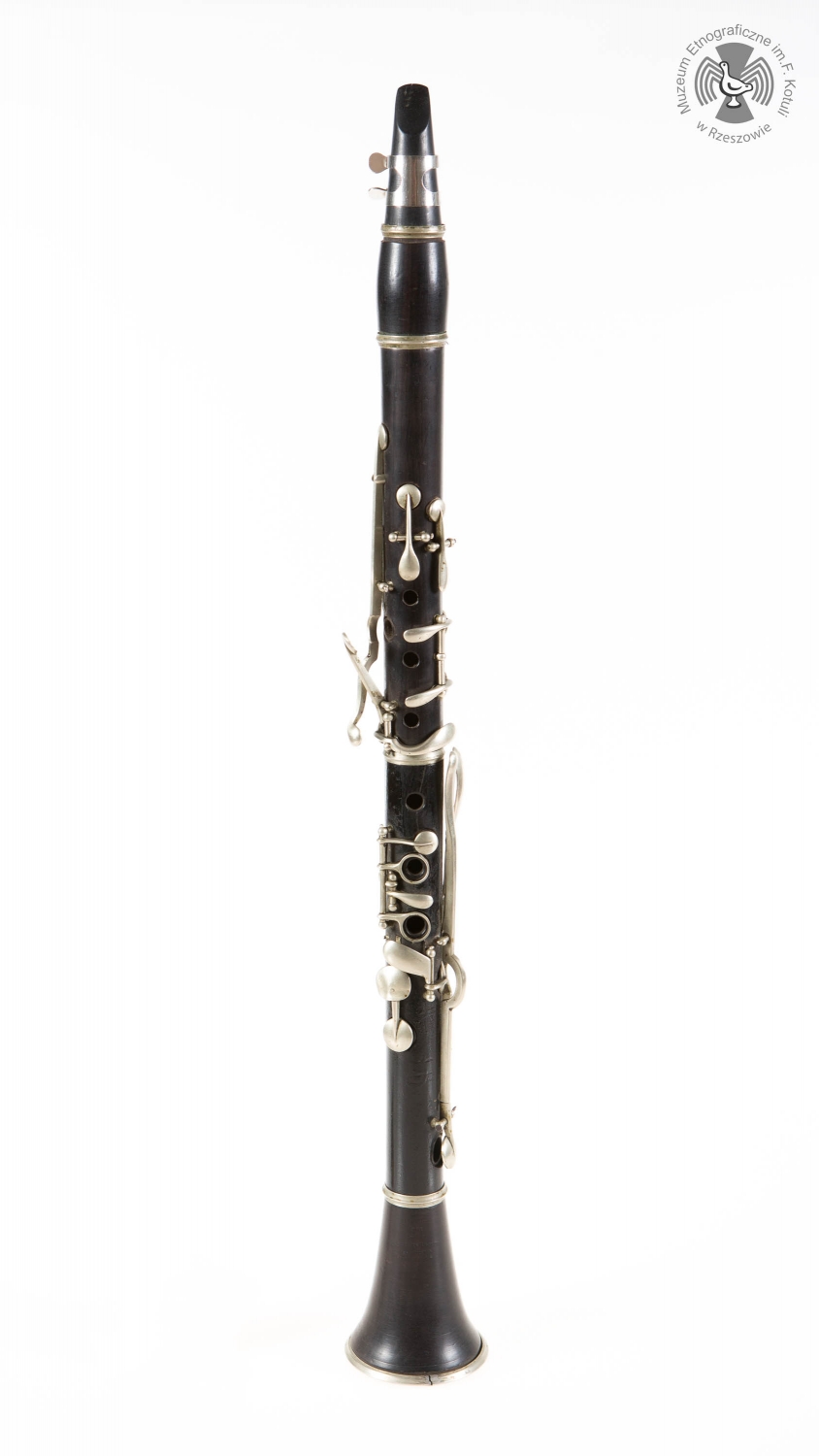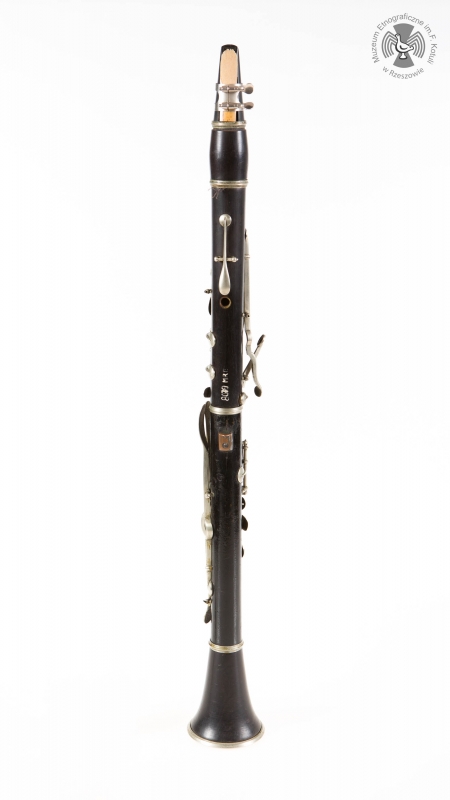B clarinet
Excerpt from the film Siła tradycji [The Power of Tradition], produced as part of the project "Muzyczny folklor Podkarpacia - badania terenowe" [The Musical Folklore of Subcarpathia - Field Studies], Franciszek Kotula Ethnographic Museum in Rzeszów, 2014
B clarinet
Classification: 4 Aerophones / 42 Wind instruments proper / 422 Reedpipes / 422.2 Reedpipes with single reeds (clarinets) / 422.21 Individual reedpipes with single reeds / 422.211 With cylindrical bore / 422.211.2 With fingerholesProducer: factory-made instrument: Julius Altrichter, Frankfurt A/O.
Date: early 20th century
Region: Carpathian area
Country: Germany
Owner: Franciszek Kotula Ethnographic Museum in Rzeszów
Inventory number: MRE 8079
Description: body (wood) made of 5 components (mouthpiece, barrel, upper tube, lower tube, bell); mouthpiece slightly narrowing towards a so-called "beak", supplied with a metal mechanism to mount the reed (cane); keywork (full and ring-shaped) and fingerholes located in the upper tube (12 fingerholes) and lower tube (9 fingerholes); the modern B clarinet mechanism has been slightly modified, hinting towards the possible age of the instrument
Decoration: lower tube coated with black paint
Measurements: 645 mm
Materials: wood, metal
Inscriptions: HOF-INSTRUMENTEN-FABRIK / J. ALTRICHTER / FRANKFURT A/O.
Sound compass, tuning: the B clarinet transposes down two semitones (it sounds a major second lower than the score); in the past, folk bands would rather use the C clarinet (non-transposing clarinet), however these days the B clarinet tends to be preferred
Performance practice: component of folk bands
Catalog card by: Jolanta Pękacz / Zbigniew J. Przerembski
<< Back










